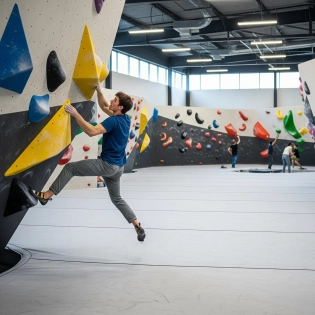
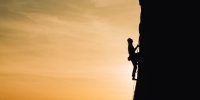

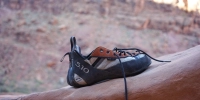
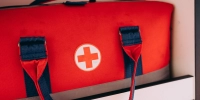


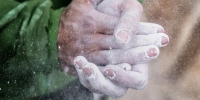
Climbers Point
Jason Momoa is an avid climber. He has been climbing since he was a teenager. The main discipline that he loves is bouldering, as that is also what he started with.
He isn't a stranger to sport climbing either, he has climbed in various locations around the world, including Yosemite National Park. Momoa has talked about how climbing helps him stay physically and mentally fit, and he encourages others to try it too.
He has also incorporated his love of climbing into his acting career by staring in a new docuseries on HBO Max called "The Climb", which he stars alongside his friend Chris Sharma, one of the greatest climbers in the world.
There are a few videos on his YouTube channel specifically about climbing, which further show his love for the sport.
It's great that someone with such an influence like him is able to introduce the sport of climbing to more people.

They are tight to help you use your feet better. That tightness is what allows you to keep your feet and weight on small holds, to pull your weight with your toes and heel, and to stand on difficult holds on terrible slabs.
The tightness allows you to just use your feet in a much more efficient way, maximizing you precision and foot power.
Climbing shoes are designed to fit tightly to provide maximum precision and support while climbing. A tight-fitting shoe can help you better feel the rock and make more precise movements. Additionally, a tight shoe can help you use your toes to push against the rock, providing more power and control.
However, it's important to note that the tightness of your climbing shoes is a personal preference and can vary depending on your foot shape and the type of climbing you're doing. When trying on climbing shoes, look for a snug fit that's not painfully tight and allows you to wiggle your toes a bit.
When you get a new pair of climbing shoes, it's important to find the right fit. You want them to be tight enough to provide good support and precision, but not so tight that they're painful. It's normal for new climbing shoes to feel tight, but you should still be able to wiggle your toes a bit. Keep in mind that the shoes will stretch a bit with use, so you don't want them to be too loose to begin with. Overall, finding the right fit for your climbing shoes is a personal preference, so try on different sizes and brands to see what works best for you.
Yeah, weight training can definitely help your climbing! When you build strength in your major muscle groups like your legs, core, back, and arms, it can make it easier to tackle more challenging climbs and prevent injuries. But keep in mind that climbing is also a skill-based sport, so it's important to keep practicing your technique and mental focus. To optimize your weight training for climbing, try exercises like squats, lunges, pull-ups, and rows. Start with a manageable weight and gradually increase it over time as you get stronger.
As a seasoned climber, I can tell you that both core strength and back strength are crucial for climbing performance, but they serve slightly different purposes.
Core strength is essential for maintaining body tension and control on the wall. It helps you stabilize your body and transfer energy efficiently through your limbs, allowing you to climb more efficiently and with better balance. A strong core also helps to reduce the risk of injury and can improve overall climbing endurance.
Back strength, on the other hand, is important for pulling and lifting your body weight. A strong back helps you engage your shoulders, arms, and upper body more effectively, allowing you to perform difficult moves and hold difficult body positions. It also helps prevent back injuries and improves overall posture, which is essential for climbing.
While both core and back strength are important, developing a strong core should be a priority for any climber. By doing specific core exercises such as planks, sit-ups, and leg raises, you can build the stability and control needed for efficient climbing. However, it's important to maintain a balance between both types of strength and incorporate exercises that target your back muscles as well.
To stop relying solely on strength and improve your climbing technique, here are a few tips:
-
Focus on footwork: Precise footwork is essential for efficient climbing, so be sure to place your feet accurately and use them to support your weight.
-
Practice precise movement: Avoid making big, energy-wasting movements by moving efficiently and with intention on the wall.
-
Use your body positioning: Body positioning is crucial to efficient climbing, so learn to use your hips, shoulders, and arms to your advantage.
-
Climb with intention: Instead of just trying to reach the top of the route, focus on each move and try to execute it as perfectly as possible to develop good habits and reinforce proper technique.
-
Get feedback: Climbing with a partner who can give you feedback on your technique can be incredibly helpful in identifying areas for improvement.
Remember that developing good technique takes time and practice, so be patient with yourself and keep working at it. By improving your technique, you'll be able to climb more efficiently and effectively.
Hang boarding can improve finger strength and grip endurance, which are important factors in climbing performance. However, it is not a replacement for climbing, as climbing involves a range of skills including footwork, balance, technique, and mental focus.
To become a better climber, it is essential to practice climbing regularly and supplement with exercises such as hang boarding. By incorporating both climbing and hang boarding into your training, you can develop a well-rounded set of skills that will help you climb more efficiently and effectively.
To stop your toes from hurting in climbing shoes, you can try the following tips:
- Make sure you're wearing the right size of climbing shoes.
- Consider getting shoes with a wider toe box or stretch your existing shoes to make more room for your toes.
- Take breaks and remove your shoes between climbs to allow your toes to rest.
- Gradually build up the amount of time you spend in your shoes to allow your feet to adjust.
- Try wearing thinner socks or no socks at all to reduce friction and pressure on your toes.
- Use foot tape or pads to cushion and protect your toes from rubbing and pressure.

